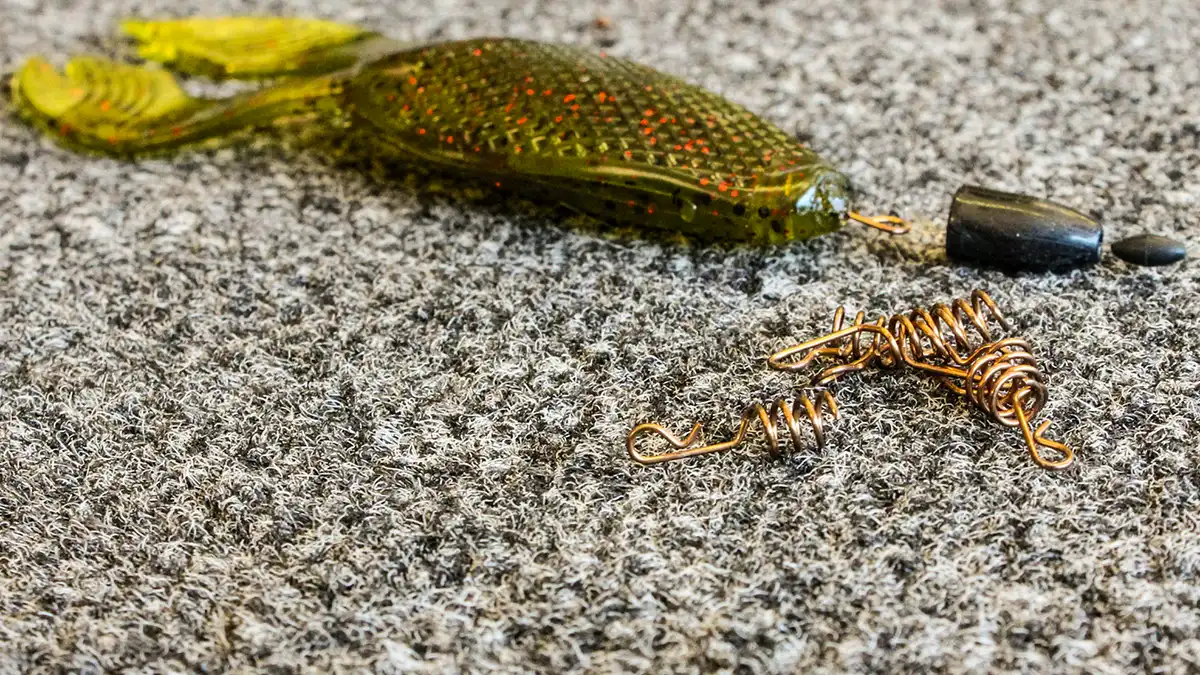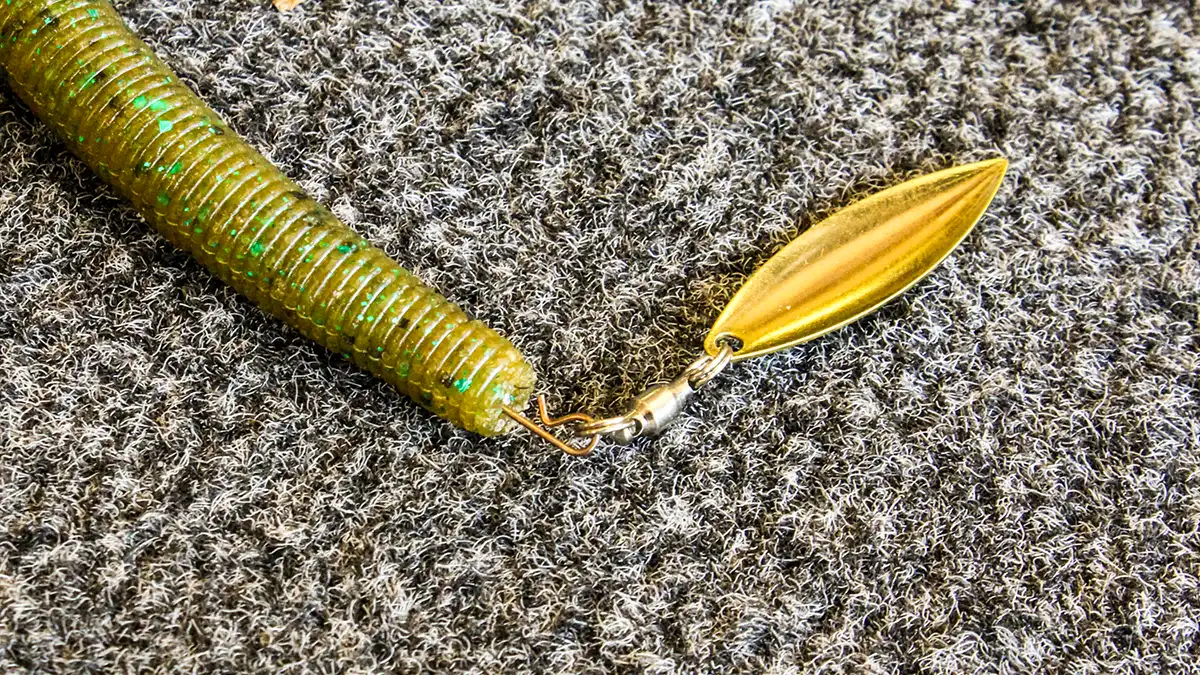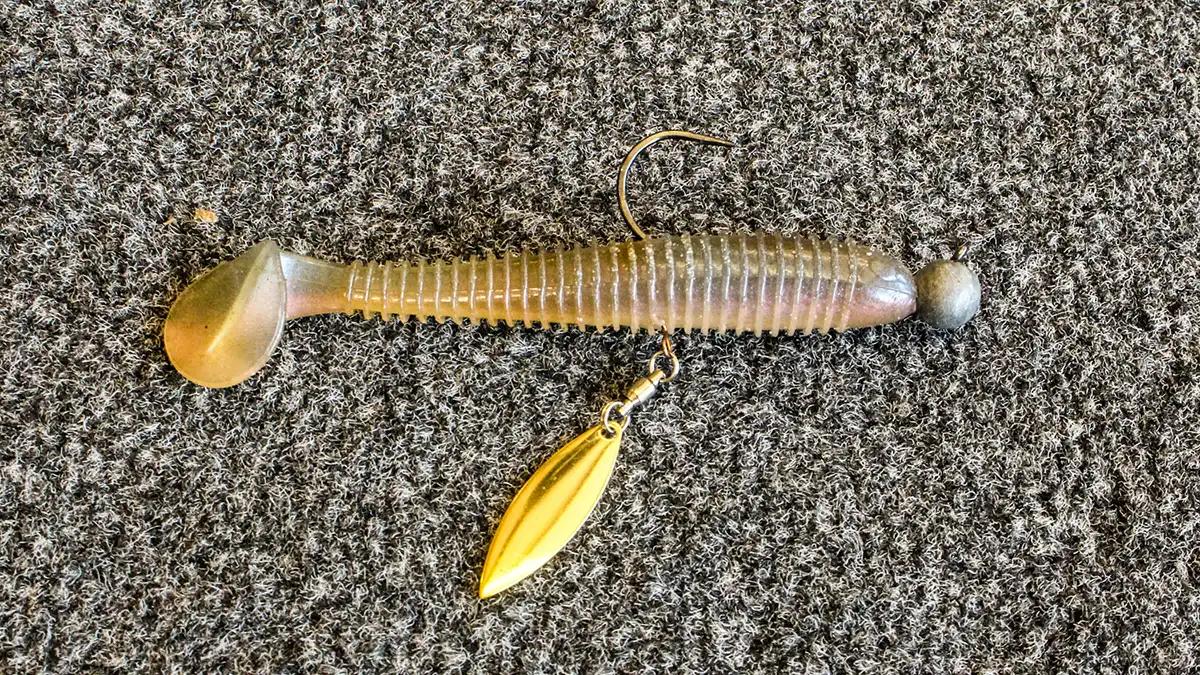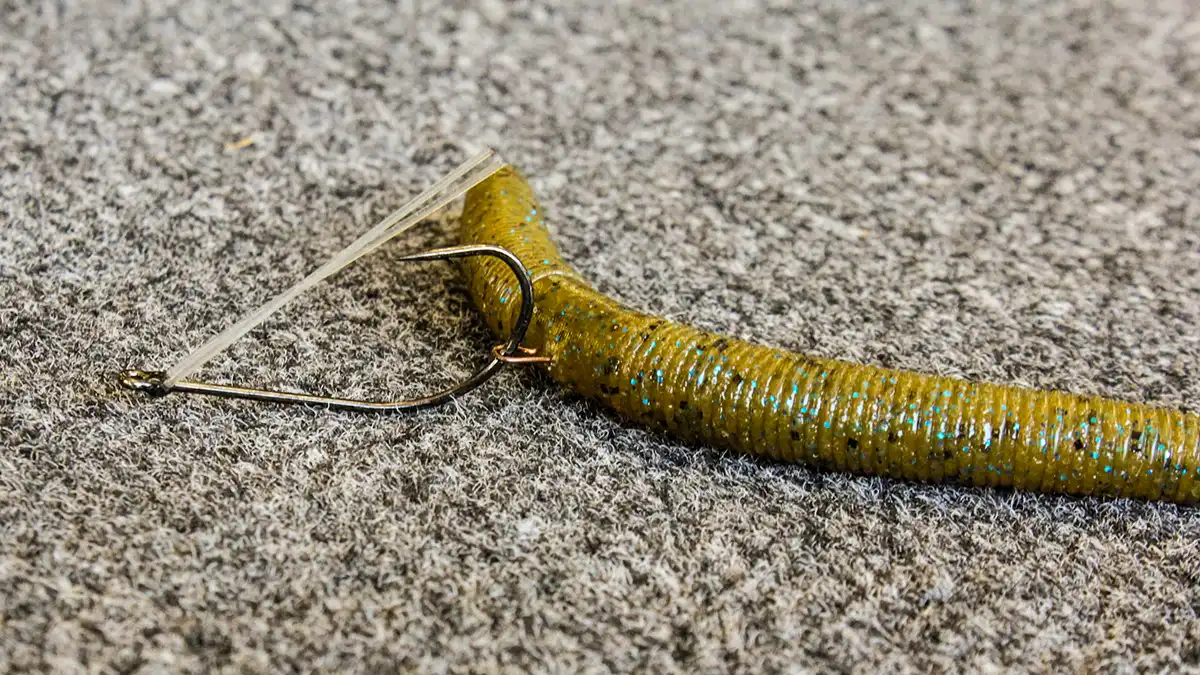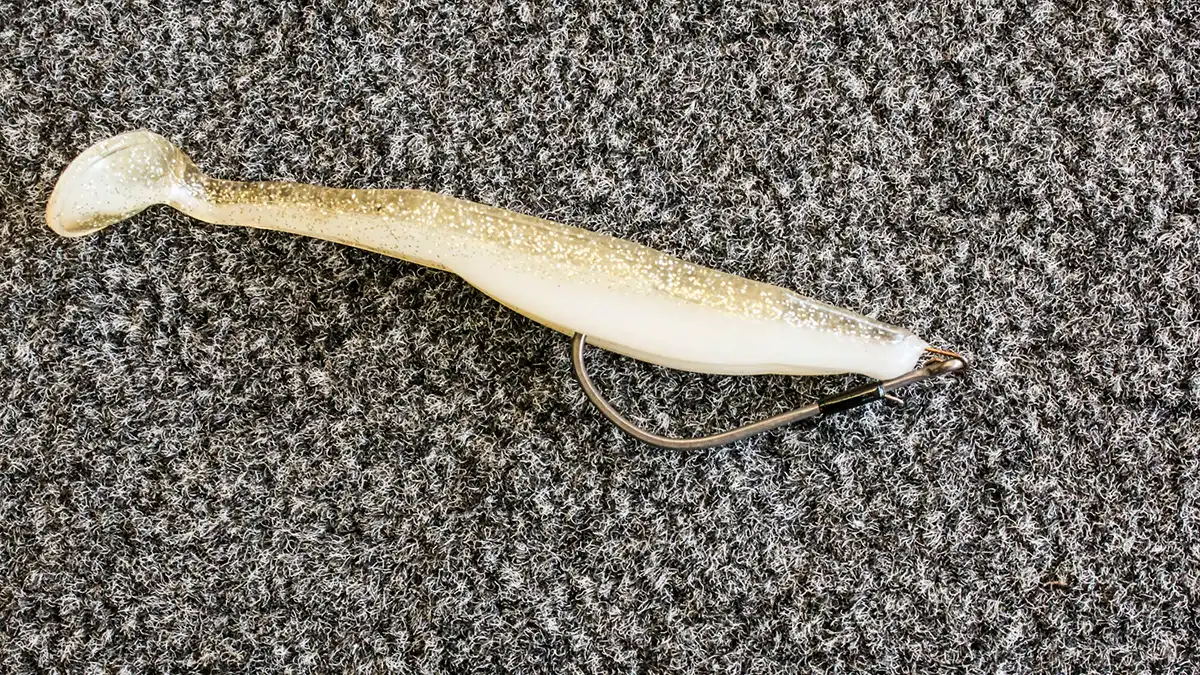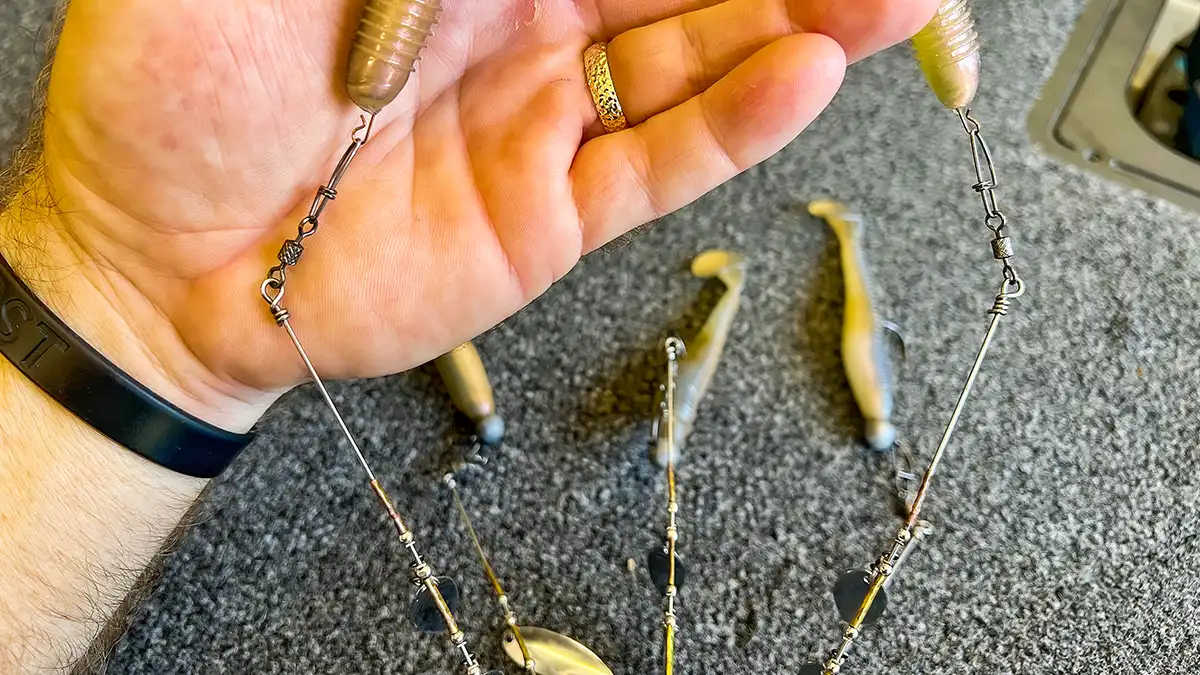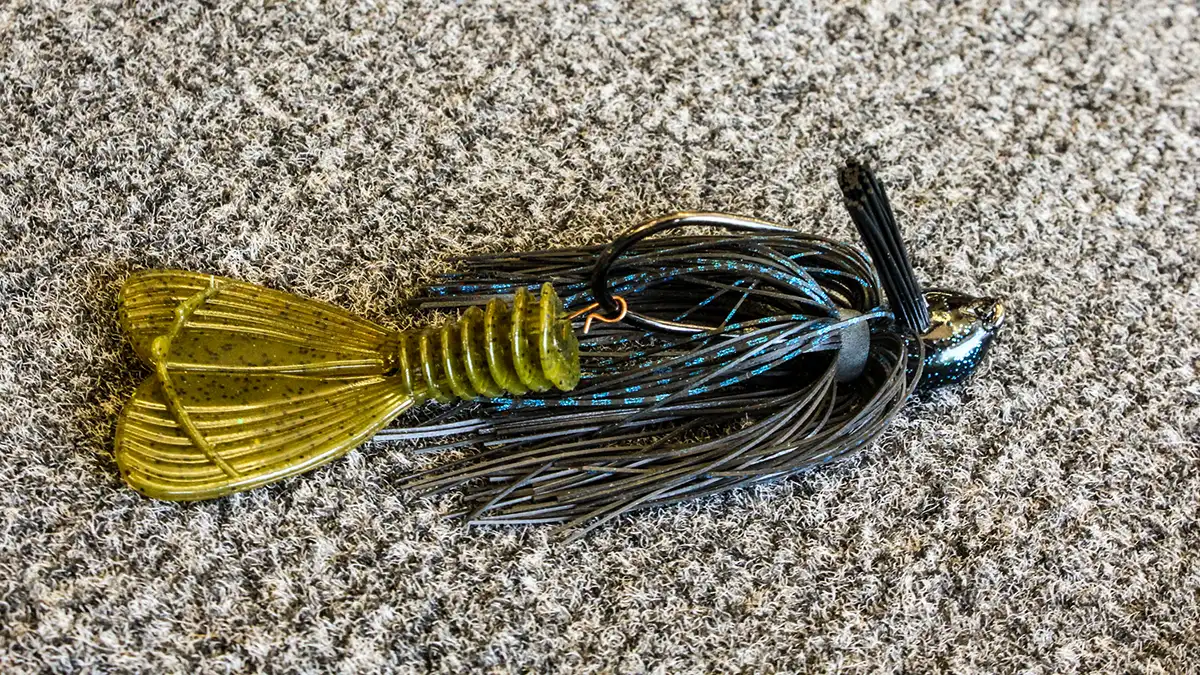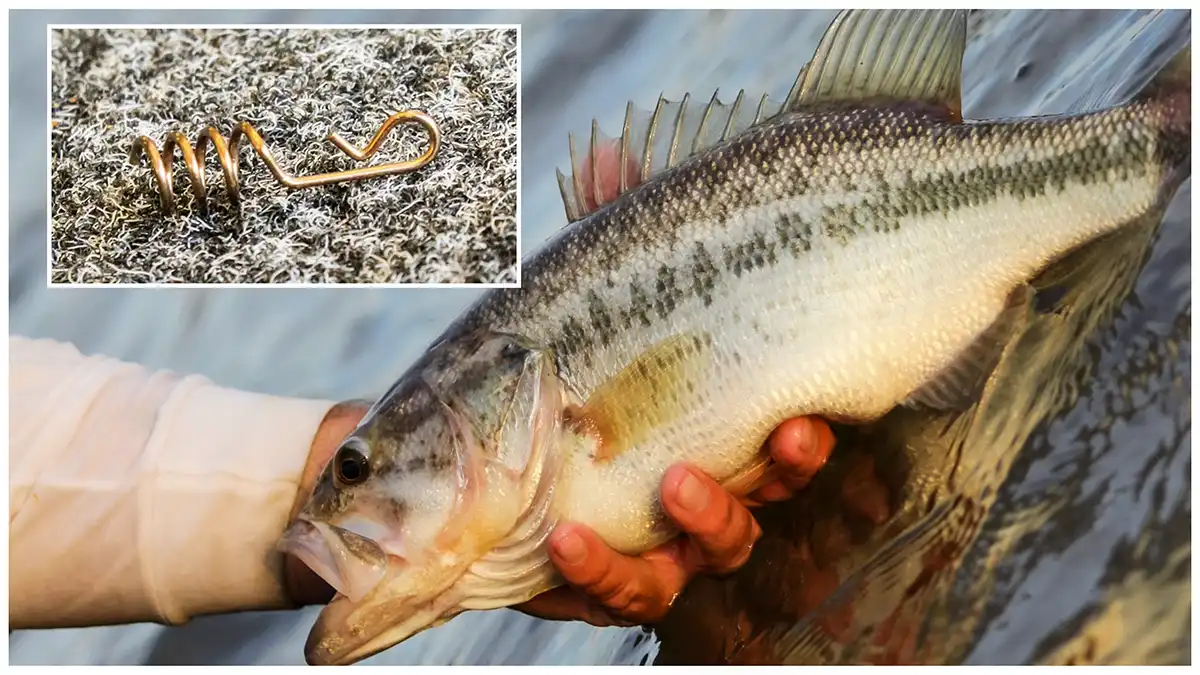My go to saying when it comes to tweaking and organizing tackle is: do a lot with a little. The drive to find new and creative ways to use simple things in a different way has spawned some of my favorite fishing hacks over the years. Now I can add: how to hack your fishing rigs with a HitchHiker.
Today we’re going to dive back in and talk about one inexpensive little piece of terminal tackle that you can do a lot with: the original screw lock the Tru-Turn HitchHiker. These hacks aren’t limited to the HitchHiker, though it’s still my favorite for the price and ease of use. Hopefully we’ll give you some new ideas on how to use this little screw-lock spring.
WHAT IS A HITCHHIKER?
So what exactly is a HitchHiker, as the term pertains to fishing? It’s essentially a spring that’s used to attach a soft plastic to something. Tru-Turn was the first to introduce a product like this to the market, theirs being deemed the HitchHiker. Thus the name HitchHiker has become synonymous with this segment of terminal tackle, similarly to how vibrating jigs are often caller ChatterBaits and soft plastic jerkbaits are generally referred to as Flukes, though those actual trademarked names belong to Z-Man and Zoom.
Even though other companies make similar products meant to accomplish some of the same tasks, there are some key differences from one product to the other in this space. We’re going to look at the actual Tru-Turn HitchHikers in particular for this piece.
1. PRACTICE FISHING
For the tournament angler looking to eliminate the risk of hooking a fish in practice, the HitchHiker is an awesome tool. Simply tie the HitchHiker onto your line like you would the eye of a hook, and then screw the spring down into your soft plastic. Now you can practice in a good area and get a bite with no hook, and thus no risk of hooking a fish. This works great for flipping, pitching and punching as well as dropshotting, soft plastic jerkbait fishing, and swimbait fishing.
2. MAKE A TAIL SPIN
You can use a HitchHiker to make your own tail spin too. You’ll need a swivel with split rings on it (like used on spinnerbaits) and a smaller blade. Put the blade on the split rig on one end of the swivel (the end that spins). Then, hook the HitchHiker on the other split ring and screw the spring into the tail of a soft plastic.
If you have an old small spinnerbait that’s no longer any good, you can just clip this whole assembly off your spinnerbait and then use a HitchHiker to connect that assembly to your soft plastic.
3. ADD AN UNDERSPIN TO ANY SWIMBAIT
Similarly to how you can create a tail spin, you can also add a blade to the belly of a large weedless swimbait, a soft plastic jerkbait or a swimbait on a jighead. Just twist this same assembly up into the belly of your bait and you’re most of the way there. Depending on the blade style and size you use, you may not be able to screw the spring all the way into the bait, since the blade can hit the belly of the bait and impede its ability to spin.
4. MAKE A WACKY RIG
You can screw a HitchHiker perpendicularly into the midsection of a soft plastic stickbait to create a new way of rigging a wacky rig. Then clip the HitchHiker onto the bend of your hook and you’re good to go.
Adding a touch of super glue to the spring before twisting it into the bait can better secure the bait. You can also push a piece of tooth pick into the bait perpendicular to the screw lock and really lock it all onto the bait. It’s harder for the bait to pull out this way.
5. TURN ANY HOOK INTO A SCREWLOCK
You can also use a HitchHiker to create a toad or swimbait hook. Screw the spring down into the nose of the soft plastic, then clip the HitchHiker through the eye of the hook. This works with straight shank hooks, and allows you to use a larger hook with a wider gap than you’d be able to use if you were to rig the bait traditionally over the eye of the hook.
6. MODIFY AN UMBRELLA RIG
Different states, lakes and tournament trails have different regulations when it comes to fishing umbrella rigs. Sometimes, umbrella rigs are allowed but the number of hooks are limited. If you’re only allowed three hooks for instance but want to use an umbrella rig setup for five baits, you can use HitchHikers to add two swimbaits without hooks to your rig. These are known as dummy baits.
It’s best to use the dummies as the top two baits, since they’ll be essentially weightless and the baits with the jigheads will naturally try to sink lower in the water. This is also important because the bass typically attack the bottom baits or the middle bait of an umbrella rig more than the top two lures anyway. So make sure you setup your rig so that those three swimbaits have the hooks.
7. ADD A TRAILER
HitchHikers work great for attaching trailers to baits like spinnerbaits, buzzbaits and jigs as well. Screw the spring into the soft plastic trailer and then clip the HitchHiker onto the bend of your hook. You can expand the circle of the clip a little so that the HitchHiker still attaches firmly to the hook, but it is also loose enough in the bend to work as a hinge and allow for greater range of motion of your trailer.
There’s a lot you can do with a little screw lock bait keeper like this. These are just a few ideas to play around with. Perhaps you have some of your own? If you do, feel free to share them with us on social media and we may share them later with the rest of the Wired2Fish community!
Some examples of our other popular fishing hacks we’ve done in the past include the following:
- 10 Clever Ways to Use a Zip Tie in Fishing
- 4 Ways to Reuse Household Trash for Fishing
- 10 Household Hacks for Fishing


